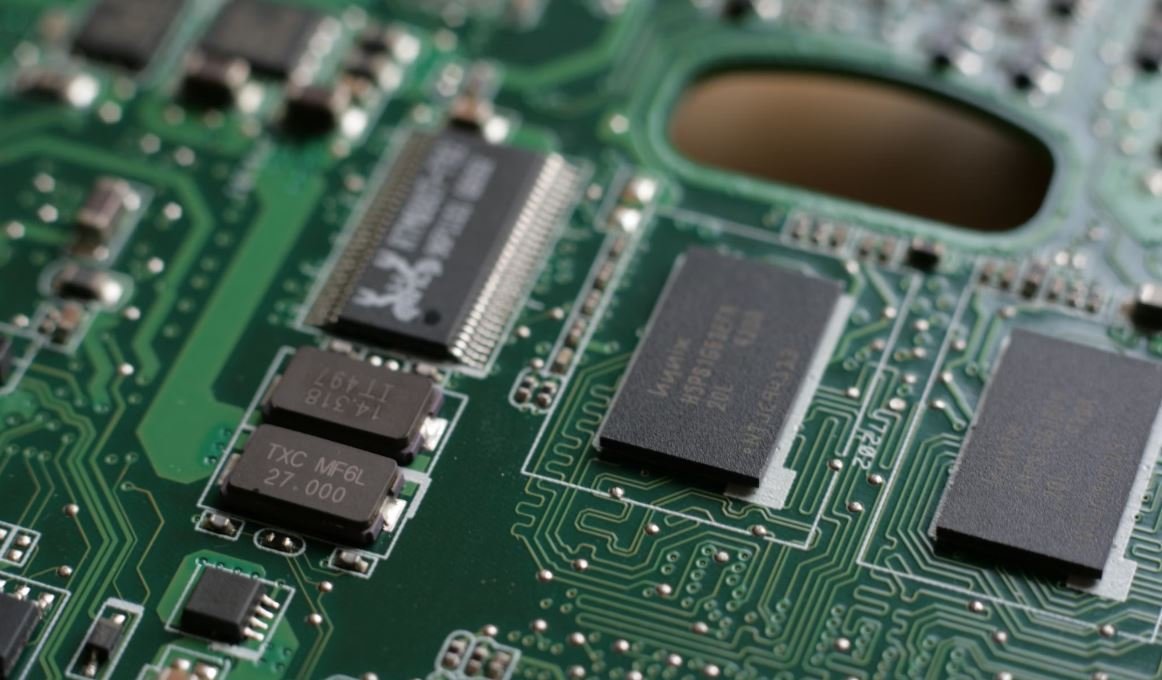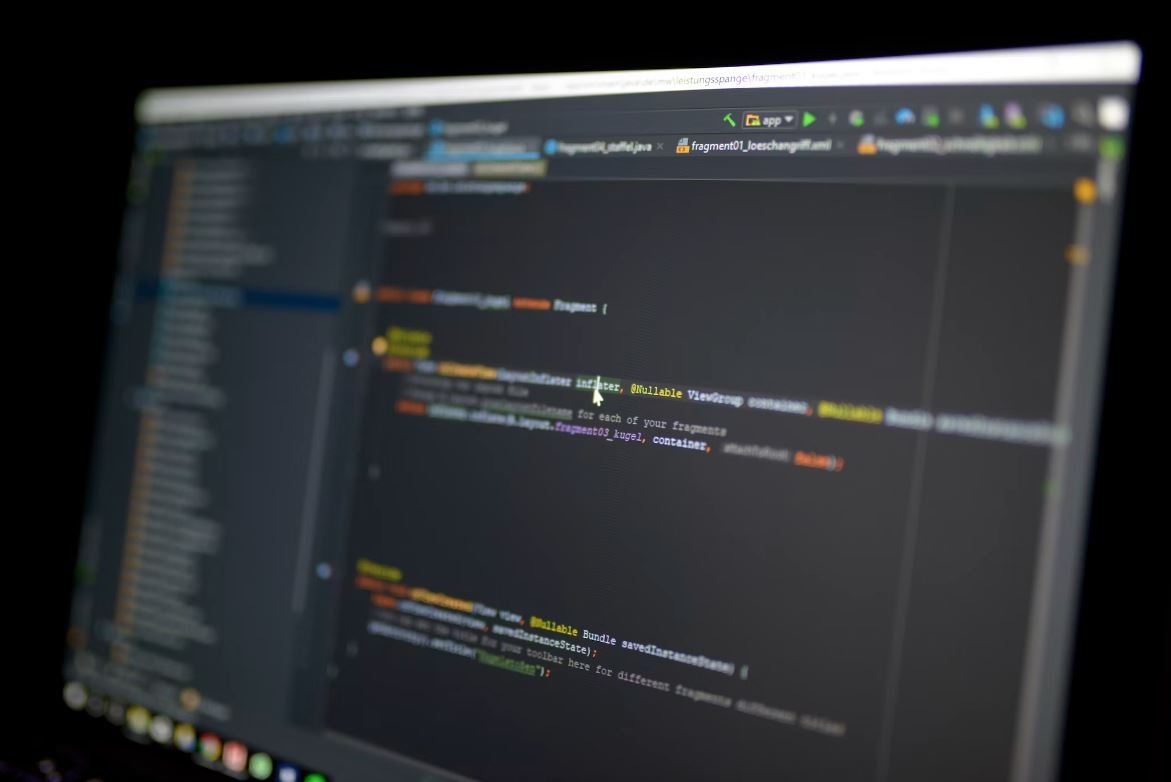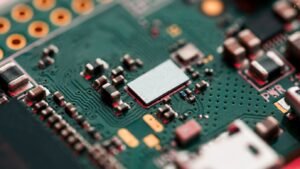Generative Music Tutorial
Generative music is a fascinating approach to creating music where algorithms are used to compose and evolve musical patterns and structures. This technique allows for endless variations and unique compositions that constantly evolve and change. In this tutorial, we will dive into the world of generative music and explore how you can create your own generative music pieces.
Key Takeaways:
- Generative music is a technique that uses algorithms to create evolving musical compositions.
- Creating generative music involves defining rules and parameters that govern the music’s behavior.
- Generative music can be created using various tools and programming languages.
- Experimentation and iteration are key to refining and perfecting generative music compositions.
Getting Started
To create generative music, you need to understand the concepts behind algorithmic composition and have a basic knowledge of music theory. Familiarize yourself with the different types of generative music systems and decide on the approach you want to take. Once you have a direction, you can start exploring the tools and software available that support generative music creation.
Generative music allows for endless experimentation and exploration, pushing the boundaries of traditional composition techniques.
Defining Rules and Parameters
Generative music relies on defining rules and parameters that govern the composition’s structure and behavior. These rules can include musical scales, rhythm patterns, harmonic progressions, and more. Experiment with different combinations and variations to create unique and interesting musical pieces.
- Define the musical elements you want to generate, such as melody, harmony, rhythm, and texture.
- Set the parameters that control the behavior of the generative system, such as tempo, pitch range, and probability of certain musical events occurring.
- Experiment with different rules and variations to achieve the desired musical outcome.
Creating Generative Music
There are various tools and programming languages available for creating generative music, each with its own strengths and capabilities. Here are a few popular choices:
- Max/MSP: A visual programming language for music and multimedia that allows for real-time generative music creation and manipulation.
- SuperCollider: An open-source platform for audio synthesis and algorithmic composition that provides extensive control over sound generation and manipulation.
- Python: A versatile programming language that offers libraries such as Music21 and MIDIUtil for generative music composition.
| Tool | Features | Learning Curve |
|---|---|---|
| Max/MSP | Real-time manipulation, extensive visual programming capabilities | Medium |
| SuperCollider | Precise control over sound generation, extensive synthesis capabilities | High |
| Python | Versatility, availability of music-related libraries | Low |
Experiment and Iterate
The beauty of generative music lies in its infinite possibilities. To create compelling generative music compositions, embrace experimentation and iteration.
Generative music allows for serendipitous moments and unexpected musical discoveries.
Continually refine and tweak the rules and parameters of your generative systems to achieve the desired musical outcome. Listen to the output of your generative music and make adjustments as needed.
Sharing Your Generative Music
Once you have created and refined your generative music compositions, you can share them with the world. Consider releasing your music on streaming platforms, social media, or even collaborate with other artists to create unique audiovisual experiences.
| Benefit | Description |
|---|---|
| Exposure and Recognition | Reach a wider audience and gain recognition for your unique musical compositions. |
| Creative Collaborations | Collaborate with visual artists, filmmakers, or performers to create immersive audiovisual installations or performances. |
| Feedback and Community | Engage with other artists and enthusiasts, receive feedback, and be part of the generative music community. |
Start Your Generative Music Journey
Generative music opens up a world of endless creativity and exploration. With the right tools and mindset, you can create unique, evolving, and inspiring musical compositions. Dive into the world of algorithmic composition, experiment with different tools, and don’t be afraid to think outside the box.
Embark on your generative music journey today and let your creativity flow!

Common Misconceptions
Generative Music Tutorial
There are several common misconceptions that people often have about generative music. Understanding these misconceptions can help in demystifying the concept and making it more approachable for newcomers.
- Generative music is purely random: One of the most common misconceptions about generative music is that it is completely random. While generative music does involve some element of randomness, it is not purely random. The process involves designing rules and parameters within which the music can generate, allowing for controlled creativity and variability.
- Generative music lacks intention: Many people assume that generative music is created without any intention or artistic direction. However, this is not true. Generative music is carefully crafted by the composers, who set the rules and parameters to guide the generation process. The composer’s intention guides the overall structure and aesthetic of the music.
- Generative music is impersonal: Another misconception is that generative music lacks a personal touch or emotional impact. While generative music may not have the same emotional depth as traditionally composed music, it can still evoke emotions and create unique atmospheric experiences. The ability to vary and adapt the music in real-time can allow for a personalized and immersive listening experience.
Understanding the potential of generative music requires dispelling some common misconceptions surrounding the concept. By breaking down these misconceptions, we can appreciate the intricate design and artistic intention behind generative music.
- Generative music is formulaic: Some people assume that generative music follows a rigid formula, limiting its creativity. However, generative music is designed to allow for variation and exploration. It is not bound by strict rules but provides a framework for musical possibilities.
- Generative music is difficult to create: Another misconception is that generative music is a complex and difficult process that requires advanced technical skills. While it may require some technical knowledge, there are various tools and software accessible to beginners, making it more accessible than ever.
- Generative music lacks coherence: Some believe that generative music lacks coherence and structure due to its randomized nature. However, generative music can have complex structures and cohesive patterns. The composers can set constraints and rules that guide the generation process, resulting in a coherent musical output.
By addressing these common misconceptions, we can better appreciate the potential of generative music as a unique and creative approach to composing and experiencing music.

Generative Music Tutorial
Generative music is a fascinating concept that involves creating music that is constantly evolving and changing. It is a creative process that combines composition with algorithmic systems to produce unique and unpredictable musical pieces. In this article, we will explore various elements and techniques of generative music through engaging and informative tables.
The 10 Most Common Algorithmic Techniques Used in Generative Music
| Technique | Description |
|---|---|
| Markov Chains | Probabilistic model based on analyzing patterns in sequences of notes or musical events. |
| Fractal Melodies | Utilizing self-similar patterns to generate melodies, often inspired by mathematical fractals. |
| Genetic Algorithms | Evolutionary approach where different musical ideas “breed” and mutate to create new compositions. |
| Rule-based Systems | Using a set of predefined rules and conditions to generate musical patterns and structures. |
| Chaos Theory | Exploring the deterministic yet unpredictable behavior of complex systems to create musical elements. |
| Parameter Mapping | Mapping various parameters (e.g., pitch, rhythm) to external data sources or inputs. |
| Cellular Automata | Generating musical sequences by simulating the behavior of cells within a grid-based environment. |
| Neural Networks | Using artificial intelligence and machine learning algorithms to generate music based on training data. |
| Probability Distributions | Applying statistical methods to determine the likelihood of certain musical events or transitions. |
| Phase Distortion | Distorting sound waveforms based on manipulating phase characteristics to create unique timbres. |
Table: The 10 Most Common Algorithmic Techniques Used in Generative Music
Comparison of Popular Generative Music Software
| Software | Price | Features | User Rating |
|---|---|---|---|
| Max/MSP | $399 – $699 | Extensive modular environment for sound synthesis and generative music creation. | 4.5/5 |
| Pd (Pure Data) | Free | Open-source visual programming language with a focus on real-time audio processing. | 4/5 |
| Sonic Pi | Free | Live coding platform with a simple syntax for generative music and sound synthesis. | 4/5 |
| Supercollider | Free | Text-based programming language for audio synthesis and algorithmic music composition. | 4.5/5 |
| Kyma | $1,395 | Hardware and software system for sound design, synthesis, and generative music creation. | 4/5 |
Table: Comparison of Popular Generative Music Software
Examples of Notable Generative Music Compositions
| Composition | Composer | Year |
|---|---|---|
| “In C” | Terry Riley | 1964 |
| “Generative Music #1” | Brian Eno | 1975 |
| “Oraison” | Olivier Messiaen | 1937 |
| “Autechre: Quaristice” | Autechre | 2008 |
| “Stairway to Heaven” | LED Zeppelin | 1971 |
Table: Examples of Notable Generative Music Compositions
Instruments That Can Be Used to Create Generative Music
| Instrument | Description |
|---|---|
| Synthesizer | An electronic instrument capable of generating a wide range of sounds through various synthesis methods. |
| Sampler | A device or software that plays back recorded audio samples, often allowing manipulation and sequencing. |
| Sequencer | A device or software used to program and control the timing and order of musical events. |
| MIDI Controller | A device that generates MIDI data to control other instruments or software in real-time. |
| Drum Machine | An electronic instrument specifically designed to produce drum and percussion sounds and patterns. |
Table: Instruments That Can Be Used to Create Generative Music
Main Challenges in Generative Music Composition
| Challenge | Description |
|---|---|
| Avoiding Repetition | Ensuring the generated music is continuously evolving and avoiding predictable or monotonous patterns. |
| Finding Balance | Finding the right level of randomness and control to maintain artistic intention while embracing generative processes. |
| Human Engagement | Creating music that is emotionally engaging, despite being generated by algorithms and lacking human touch. |
| Computational Limitations | Dealing with limitations of computational power and memory when generating complex musical structures or textures. |
| Interplay with Musicians | Ensuring generative music can effectively integrate and interact with live musicians during performance. |
Table: Main Challenges in Generative Music Composition
Famous Artists Who Have Experimented with Generative Music
| Artist | Genre |
|---|---|
| Brian Eno | Ambient |
| Aphex Twin | Electronic |
| Terry Riley | Minimalism |
| Karlheinz Stockhausen | Electronic |
| Iannis Xenakis | Avant-garde |
Table: Famous Artists Who Have Experimented with Generative Music
Characteristics of Generative Music
| Characteristic | Description |
|---|---|
| Unpredictable | Generative music creates compositions that are constantly evolving and unpredictable, making each performance unique. |
| Adaptive | Generative music can respond to external stimuli or conditions, adapting its musical output in real-time. |
| Infinite Variation | Generative systems can generate an infinite number of musical variations within predefined boundaries. |
| Exploration of Sound | Generative music often encourages exploration and experimentation with sound and musical elements. |
| Non-linear Structures | Generative music can create non-linear musical structures that deviate from traditional linear progressions. |
Table: Characteristics of Generative Music
Applications of Generative Music
| Application | Description |
|---|---|
| Background Music | Generative music is often used as background ambiance in various settings, such as restaurants or retail stores. |
| Film Scores | Composers utilize generative techniques to create dynamic and evolving soundtracks for movies and TV shows. |
| Interactive Installations | Generative music enhances interactive art installations by creating audio experiences that respond to user input. |
| Game Soundtracks | Generative music adds depth and adaptability to video game soundtracks, enhancing the player’s immersion. |
| Meditation and Relaxation | Generative music aids in meditation and relaxation practices by creating calm and soothing sonic environments. |
Table: Applications of Generative Music
Generative music is a captivating field that brings together artistic creativity and algorithmic systems. Through the tables presented in this article, we have explored various aspects of generative music, including algorithmic techniques, software comparisons, notable compositions, instruments used, challenges in composition, influential artists, characteristics, and applications.
The tables highlight the diversity and richness of generative music, showcasing the vast possibilities it offers for musical exploration and innovation. By harnessing the power of algorithms and embracing unpredictability, generative music pushes the boundaries of traditional composition and invites us into a realm of ever-evolving sonic experiences.
Frequently Asked Questions
What is generative music?
Generative music refers to music that is created through a system or algorithm that generates the music automatically, without direct human intervention. It involves using rules, parameters, and randomness to generate different musical elements such as melodies, rhythms, harmonies, and textures.
How does generative music work?
Generative music typically relies on algorithms or computer programs that define certain rules and parameters for musical generation. These algorithms may include elements of randomness or probability to introduce variation and unpredictability into the music. The system then uses these rules and parameters to automatically generate and evolve musical elements over time.
What are the benefits of generative music?
Generative music offers several benefits, such as endless possibilities for music creation, unique musical landscapes, and the ability to create music that evolves and changes over time. It can also serve as a source of inspiration for composers, help in overcoming creative blocks, and create immersive and interactive musical experiences for listeners.
Can anyone create generative music?
Yes, anyone with basic knowledge of music theory and programming concepts can create generative music. While advanced programming skills can be helpful, there are also user-friendly software applications and tools available that provide a more accessible way to experiment with generative music composition.
What tools or software are commonly used for generative music?
There are various software applications commonly used for creating generative music, including Max/MSP, SuperCollider, Pure Data, and Ableton Live. These platforms provide the necessary tools and functionalities to implement and experiment with generative music algorithms and compositions.
What are some techniques used in generative music composition?
Techniques commonly used in generative music composition include Markov chains, cellular automata, fractal algorithms, genetic algorithms, and chance operations. These techniques help in generating musical patterns, transforming and evolving musical elements, and introducing randomness and variation in the composition process.
Can generative music be used in live performances?
Yes, generative music can be used in live performances to create unique and dynamic musical experiences. In live settings, the generative music system can be controlled and manipulated in real-time, allowing for improvisation, interaction with other performers, and responding to the audience’s reactions.
Is generative music copyrighted?
Generative music compositions can be copyrighted, just like any other form of music. The copyright belongs to the creator of the music, whether it is a human composer or a generative music system. However, it is important to note that generative music may involve using pre-existing sound samples or external libraries, which may have their own licensing restrictions.
Are there any legal considerations when using generative music?
When using generative music, it is essential to ensure that you have the necessary rights and permissions for the materials used, such as sound samples or libraries. Additionally, if you plan to distribute or publicly perform generative music, it is recommended to consult with a legal professional to understand any licensing or copyright implications.
Can generative music be used commercially?
Yes, generative music can be used commercially, provided the necessary legal considerations and permissions are taken into account. Depending on the specific use and distribution of the generative music, such as in advertisements, films, or video games, additional licensing may be required for the commercial use of the music.




